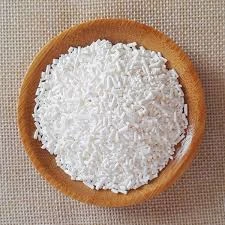
Exploring the Role of Monosodium Glutamate in Food Ingredients and Flavor Enhancement
The Role of Monosodium Glutamate in Cooking A Deep Dive into Its Ingredients and Benefits
Monosodium glutamate, commonly known as MSG, has often sparked debates among food lovers, health-conscious individuals, and culinary experts alike. As a flavor enhancer, MSG has become a staple ingredient in various cuisines around the globe. Understanding its composition and benefits can help demystify this often-misunderstood additive.
What is Monosodium Glutamate?
Monosodium glutamate is the sodium salt of glutamic acid, an amino acid that occurs naturally in many foods. Glutamic acid is classified as a non-essential amino acid since our bodies can produce it, and it plays a crucial role in protein synthesis and brain function. MSG enhances flavor by activating specific taste receptors on our tongues, particularly the umami taste, which is recognized as one of the five basic tastes alongside sweet, sour, bitter, and salty.
The Ingredients of Monosodium Glutamate
MSG is composed of two main ingredients sodium and glutamate. When glutamic acid is combined with sodium, it forms monosodium glutamate. This simple structure allows MSG to dissolve easily in water, which makes it an excellent seasoning option in a variety of dishes.
1. Sodium As a key component of MSG, sodium plays an essential role in regulating fluid balance and nerve function in the body. It is important to maintain an appropriate level of sodium intake, but, like many nutrients, consuming it in moderation is key to a balanced diet.
2. Glutamate This naturally occurring amino acid can be found in many foods, including tomatoes, cheese, mushrooms, and certain meats. Glutamate is responsible for the savory flavor known as umami, which is prized in culinary cultures worldwide. The abundance of glutamate in natural foods suggests that our bodies are well-equipped to metabolize it.
monosodium glutamate ingredients

Culinary Uses of Monosodium Glutamate
MSG has become famous particularly in Asian cuisine. It is frequently used in dishes such as soups, stir-fries, and sauces to enhance the overall flavor profile. In addition, MSG is prevalent in processed foods like snack items, canned goods, and frozen meals. By boosting the umami flavor, MSG allows chefs and food manufacturers to produce more flavorful dishes even with the reduced quantities of other ingredients.
One fascinating aspect of MSG use is its ability to reduce the need for excessive salt. By incorporating MSG, cooks can enhance flavor without significantly increasing the sodium content, allowing for healthier cooking without sacrificing taste.
Health Perspectives
Over the decades, MSG has faced scrutiny and controversy regarding its safety and health impacts. Some reports have associated it with various adverse reactions, often dubbed “Chinese Restaurant Syndrome,” which includes symptoms such as headache and nausea. However, extensive research has shown that, for the vast majority of people, MSG is safe when consumed in normal amounts.
Health organizations, including the U.S. Food and Drug Administration (FDA) and the World Health Organization (WHO), have conducted studies and concluded that MSG is generally recognized as safe (GRAS). Still, individuals who believe they are sensitive to MSG are advised to avoid it—but this is a relatively small group.
Conclusion
Monosodium glutamate is a versatile ingredient that has gained a permanent place in the culinary world. Composed of two basic components—sodium and glutamate—it serves as an effective flavor enhancer, allowing for a rich umami taste without the need for excessive salt. Understanding the ingredients and benefits associated with MSG can help alleviate concerns and encourage culinary exploration. Ultimately, whether you are a chef seeking to deepen your flavor palette or a home cook looking to spice up your dishes, MSG can be a valuable addition to your cooking repertoire when used judiciously. So the next time you savor a savory dish, consider the role that monosodium glutamate might be playing in enhancing that delightful flavor!
-
Pure Sodium Dichloroisocyanurate Dihydrate | Powerful DisinfectantNewsAug.29,2025
-
Industrial Chemicals: Quality & Purity for Every IndustryNewsAug.28,2025
-
Nitrile Rubber Honoring Strict Production StandardsNewsAug.22,2025
-
Aspartame Ingredients Honoring Food Safety ValuesNewsAug.22,2025
-
Fertilizer for Balanced Plant NutritionNewsAug.22,2025
-
Cyanide Gold Processing with High Purity AdditivesNewsAug.22,2025
-
Formic Acid in Textile Dyeing ApplicationsNewsAug.22,2025
Hebei Tenger Chemical Technology Co., Ltd. focuses on the chemical industry and is committed to the export service of chemical raw materials.
-

view more DiethanolisopropanolamineIn the ever-growing field of chemical solutions, diethanolisopropanolamine (DEIPA) stands out as a versatile and important compound. Due to its unique chemical structure and properties, DEIPA is of interest to various industries including construction, personal care, and agriculture. -

view more TriisopropanolamineTriisopropanolamine (TIPA) alkanol amine substance, is a kind of alcohol amine compound with amino and alcohol hydroxyl, and because of its molecules contains both amino and hydroxyl. -

view more Tetramethyl Thiuram DisulfideTetramethyl thiuram disulfide, also known as TMTD, is a white to light-yellow powder with a distinct sulfur-like odor. It is soluble in organic solvents such as benzene, acetone, and ethyl acetate, making it highly versatile for use in different formulations. TMTD is known for its excellent vulcanization acceleration properties, which makes it a key ingredient in the production of rubber products. Additionally, it acts as an effective fungicide and bactericide, making it valuable in agricultural applications. Its high purity and stability ensure consistent performance, making it a preferred choice for manufacturers across various industries.





